Related Research Articles
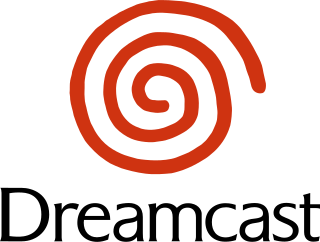
The Dreamcast is a home video game console released by Sega on November 27, 1998, in Japan; September 9, 1999, in North America; and October 14, 1999, in Europe. It was the first sixth-generation video game console, preceding Sony's PlayStation 2, Nintendo's GameCube, and Microsoft's Xbox. The Dreamcast was Sega's final console; its 2001 discontinuation ended the company's eighteen years in the console market.
Space Channel 5 is a music video game developed by Sega AM9 and published by Sega. Originally released for the Dreamcast, it was later ported to the PlayStation 2. A version for the Game Boy Advance (GBA) was published in 2003 as a Western exclusive. Following space-faring reporter Ulala as she investigates an alien invasion, players engage in rhythm-based combat where Ulala mimics the actions of rivals in time to musical tracks.

Shenmue is a 1999 action-adventure game developed and published by Sega for the Dreamcast. It follows the teenage martial artist Ryo Hazuki as he sets out in revenge for the murder of his father in 1980s Yokosuka, Japan. The player explores an open world, fighting opponents in brawler battles and encountering quick time events. The environmental detail was considered unprecedented, with numerous interactive objects, a day-and-night system, variable weather effects, non-player characters with daily schedules and various minigames.

Rez is a musical rail shooter developed by United Game Artists and published by Sega for the Dreamcast and PlayStation 2. It was released in Japan in 2001, followed by releases to the United States and Europe in 2002. The game was ported to Xbox 360 as Rez HD by Q Entertainment and HexaDrive in 2008. A virtual reality-compatible expanded version dubbed Rez Infinite was co-developed and released through 2016 to 2023 by Enhance Games, Resonair and Monstars for PlayStation 4, Windows, Android, Oculus Quest and PlayStation 5.

Yu Suzuki is a Japanese game designer, producer, programmer, and engineer, who headed Sega's AM2 team for 18 years. Considered one of the first auteurs of video games, he has been responsible for a number of Sega's arcade hits, including three-dimensional sprite-scaling games that used "taikan" motion simulator arcade cabinets, such as Hang-On, Space Harrier, Out Run and After Burner, and pioneering polygonal 3D games such as Virtua Racing and Virtua Fighter, which are credited with popularizing 3D graphics in video games; as well as the critically acclaimed Shenmue series. As a hardware engineer, he led the development of various arcade system boards, including the Sega Space Harrier, Model 1, Model 2 and Model 3, and was involved in the technical development of the Dreamcast console and its corresponding NAOMI arcade hardware.
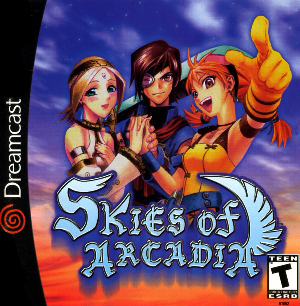
Skies of Arcadia is a 2000 role-playing video game developed by Overworks and published by Sega. Players control Vyse, a young air pirate, and his friends as they attempt to stop the Valuan Empire from reviving ancient weapons with the potential to destroy the world. The game was released for the Dreamcast in late 2000 and was ported to the GameCube in 2003.

Samba de Amigo is a rhythm game developed by Sonic Team and published by Sega. The game was released in arcades in December 1999, and for the Dreamcast video game console in 2000. A port for the Wii was also developed by Gearbox Software and Escalation Studios and released in 2008. Samba de Amigo draws on Latin American culture and its gameplay involves the player using controllers shaped like maracas to match a series of patterns displayed on-screen. The music is made of primarily popular Latin music songs rather than common or traditional samba. The game also features non-Latin pop songs.
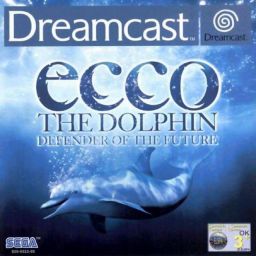
Ecco the Dolphin: Defender of the Future is an action-adventure game developed by Appaloosa Interactive. It is the fifth, and most recent, title in the Ecco the Dolphin franchise and is a reboot of the series. It was released in 2000 for the Dreamcast, with a version for the PlayStation 2 being later released in 2002.
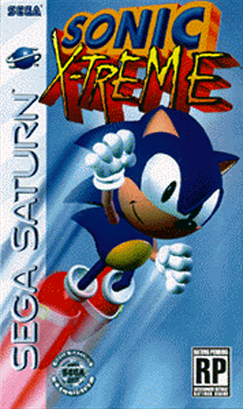
Sonic X-treme was a platform game developed by Sega Technical Institute from 1994 until its cancellation in 1996. It was planned as the first fully 3D Sonic the Hedgehog game, taking Sonic into the 3D era of video games, and the first original Sonic game for the Sega Saturn. The storyline followed Sonic on his journey to stop Dr. Robotnik from stealing six magic rings from Tiara Boobowski and her father. X-treme featured open levels rotating around a fixed center of gravity and, like previous Sonic games, featured collectible rings and fast-paced gameplay.

Numerous video games based on the Jurassic Park franchise have been released. Developers Ocean Software, BlueSky Software and Sega produced various games in 1993, coinciding with the first film, Jurassic Park. In 1997, several developers, including DreamWorks Interactive and Appaloosa Interactive, produced various games for nine different platforms to coincide with the release of the film The Lost World: Jurassic Park.
Appaloosa Interactive was a corporation, founded in 1982 in Hungary, that produced video games, computer programs and television commercials during the 1980s and 1990s.

Red Dog: Superior Firepower, also known as simply Red Dog, is a shooter game released in 2000 for the Sega Dreamcast; it was developed by Argonaut Games.

Vectorman 2 is a 2D action platformer developed by BlueSky Software and published by Sega. Released just a year after the original Vectorman, the game retains the game's core gameplay while expanding its mechanics. While multiple sequels were planned or proposed, no further entries in the series have surfaced to date.

Princess Crown is an action role-playing game developed by Atlus and published by Sega that was released only in Japan. Originally released in 1997 for the Sega Saturn, it was ported to the PlayStation Portable in 2005. Using a two-dimensional side-scrolling perspective, gameplay focuses on a beat 'em up-style fighting system, incorporating role-playing elements. Set in the fantasy kingdom of Valendia, the player controls queen Gradriel De Valendia, as her wish to aid the people in person leads into a quest to prevent the resurrection of the demon lord Lalva. Additional character scenarios are unlocked by completing Gradriel's quest, with completion of all story routes leading to the true ending.
Ecco the Dolphin is a series of action-adventure video games developed by Appaloosa Interactive and published by Sega. They were originally developed for the Mega Drive/Genesis and Dreamcast video game consoles, and have been ported to numerous systems. The story follows the eponymous Ecco, a bottlenose dolphin, who fights extraterrestrial threats to the world. The games are known for their high difficulty level. Ecco was created by Ed Annunziata, who also produced Chakan: The Forever Man, which was also released in December 1992.
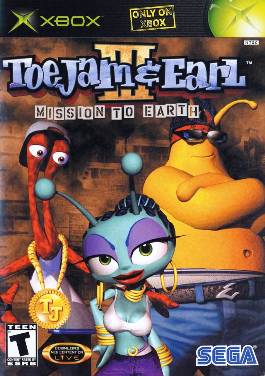
ToeJam & Earl III: Mission to Earth is an action video game released for the Xbox on October 22, 2002. Developed by ToeJam & Earl Productions and Visual Concepts, and published by Sega, it is the third installment in the ToeJam & Earl series. Players assume the role of one of three extraterrestrial protagonists: ToeJam and Earl, who starred in the series' first two games, and Latisha, a new character. While using power-ups to combat enemies, players seek to collect the twelve "Sacred Albums of Funk" and defeat the antagonistic "Anti-Funk."

Sega Studios San Francisco, formerly known as Secret Level, Inc., was an American video game developer based in San Francisco, California. It was founded in December 1999 by Jeremy Gordon, Otavio Good, and Josh Adams.
As the Sonic the Hedgehog series of platform games has grown in popularity, its publisher Sega has expanded the franchise into multiple different genres. Among these are several educational video games designed to appeal to young children. The first attempt to create an educational Sonic game was Tiertex Design Studios' Sonic's Edusoft for the Master System in late 1991, which was canceled despite having been nearly finished. When Sega launched the Sega Pico in 1994, it released Sonic the Hedgehog's Gameworld and Tails and the Music Maker for it. Orion Interactive also developed the 1996 Sega PC game Sonic's Schoolhouse, which used a 3D game engine and had an exceptionally large marketing budget. In the mid-2000s, LeapFrog Enterprises released educational Sonic games for its Leapster and LeapFrog Didj.
References
- 1 2 3 4 5 Yarwood, Jack (2022-12-06). "Game Preservationist Shares Images Of Cancelled Ecco The Dolphin Sequel". Time Extension. Retrieved 2023-06-23.
- 1 2 3 4 5 6 Good, Owen S. (2016-06-18). "Preservationist unearths early build of canceled Ecco the Dolphin sequel for Dreamcast". Polygon. Retrieved 2023-01-17.
- 1 2 3 4 5 6 7 Orland, Kyle (2016-06-21). "15 years later, new Ecco the Dolphin game leaks onto Dreamcast". Ars Technica. Retrieved 2023-01-17.
- 1 2 3 "Ecco the Dolphin: Prototype for Unpublished Sequel Discovered". Game Rant. 2016-06-22. Retrieved 2023-01-17.
- 1 2 3 Peeples, Jeremy (2016-06-17). "Ecco the Dolphin II: Sentinels of the Universe Prototype Released for Dreamcast". Hardcore Gamer. Retrieved 2023-06-23.